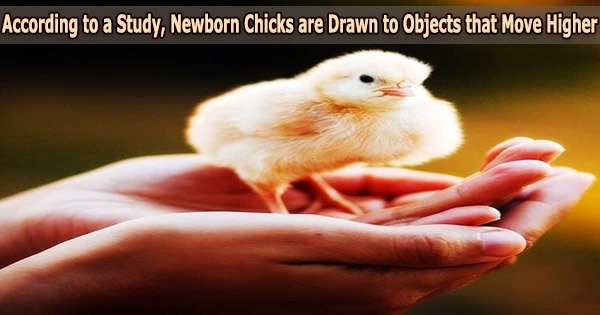Newborn chicks, also known as hatchlings, are young chickens that have recently hatched from their eggs. They are usually covered in down feathers, and are small and vulnerable. They require a warm environment, ideally between 90-100°F (32-38°C) for the first week, which can be gradually reduced as they grow older.
Animals have the ability to choose which stimuli to pay attention to and approach from birth by using their spontaneous preferences (predispositions that are not learned). Earlier studies have demonstrated how young children and chicks without any prior exposure to animals are drawn to the movement of live things.
Since only living things can continually move upward against gravity, fresh results now show how the movement against gravity might be particularly effective in grabbing our attention.
Our comprehension of inner cognitive models of behavior and activity in the early stages of life has been greatly aided by this research. The research is published in the journal Biology Letters.
It is important to handle newborn chicks gently and carefully, as they are fragile and easily stressed. They should be kept in a secure and clean brooder, away from potential predators and sources of danger.
It has been found that even infants and newborn chicks, with no previous experience with animals, are spontaneously attracted by the movement of living organisms. We showed how a very simple cue such as movement upward is able to trigger our attention.
Dr. Elisabetta Versace
Researcher Dr. Elisabetta Versace, Royal Society Leverhulme Trust Senior Fellow and Senior Lecturer at Queen Mary, said, “We find people and other animals extremely attractive objects to pay attention to; as soon as we see the walking of a dog, or the climbing of a lizard, our attention is all on them.”
“It has been found that even infants and newborn chicks, with no previous experience with animals, are spontaneously attracted by the movement of living organisms. We showed how a very simple cue such as movement upward is able to trigger our attention.”
The goal of the study was to determine whether, before any prior visual exposure to the outside world, upward movement against gravity is attractive at birth.
Using artificial intelligence to automatically track animal movement, the researchers examined the spontaneous preferences of freshly hatched chicks during their initial exposure to visual stimuli. They used similar stimuli to those used to test human expectations on gravity in the Ferrè laboratory.
They discovered that when given the option to approach an upward or downward moving circle on a computer screen, newly hatched chicks naturally gravitated toward the upward moving stimulus.
Before these studies, it was believed that the arrangement of various animal “joints” in motion attracted attention to living things. The results of the experiment shown that a single moving dot can provide the intriguing characteristic of a live item.
The results show that vertebrate animals are born with predisposed knowledge, which can be used to test for spontaneous talents that are already present at birth. Understanding how sensitivity to basic, low-level traits might influence our behaviors from the earliest stages of development requires understanding this key step.
Understanding these inner cognitive models that direct human behavior on Earth, in terrestrial gravity, and in non-terrestrial gravity is also crucial.
















